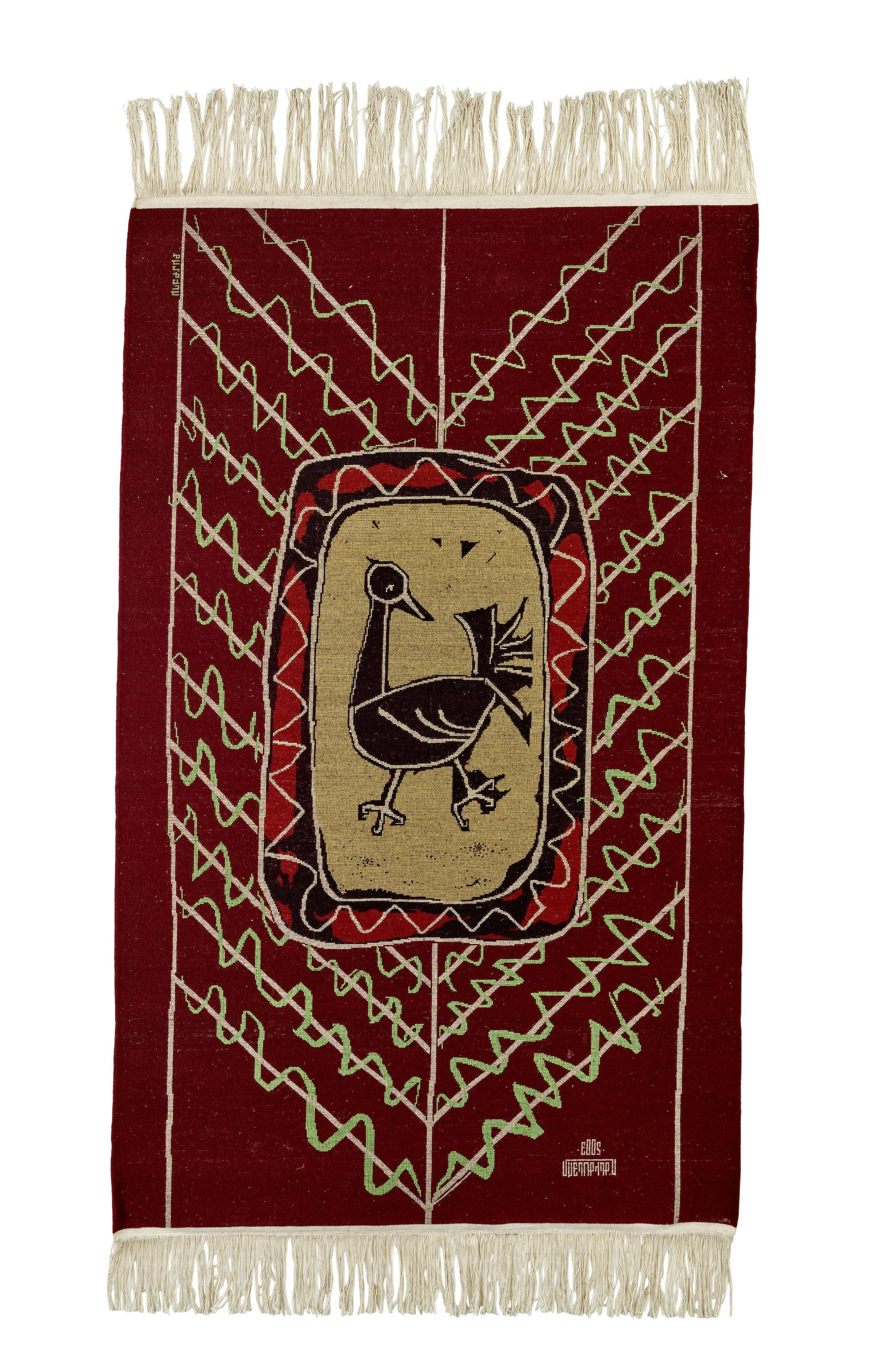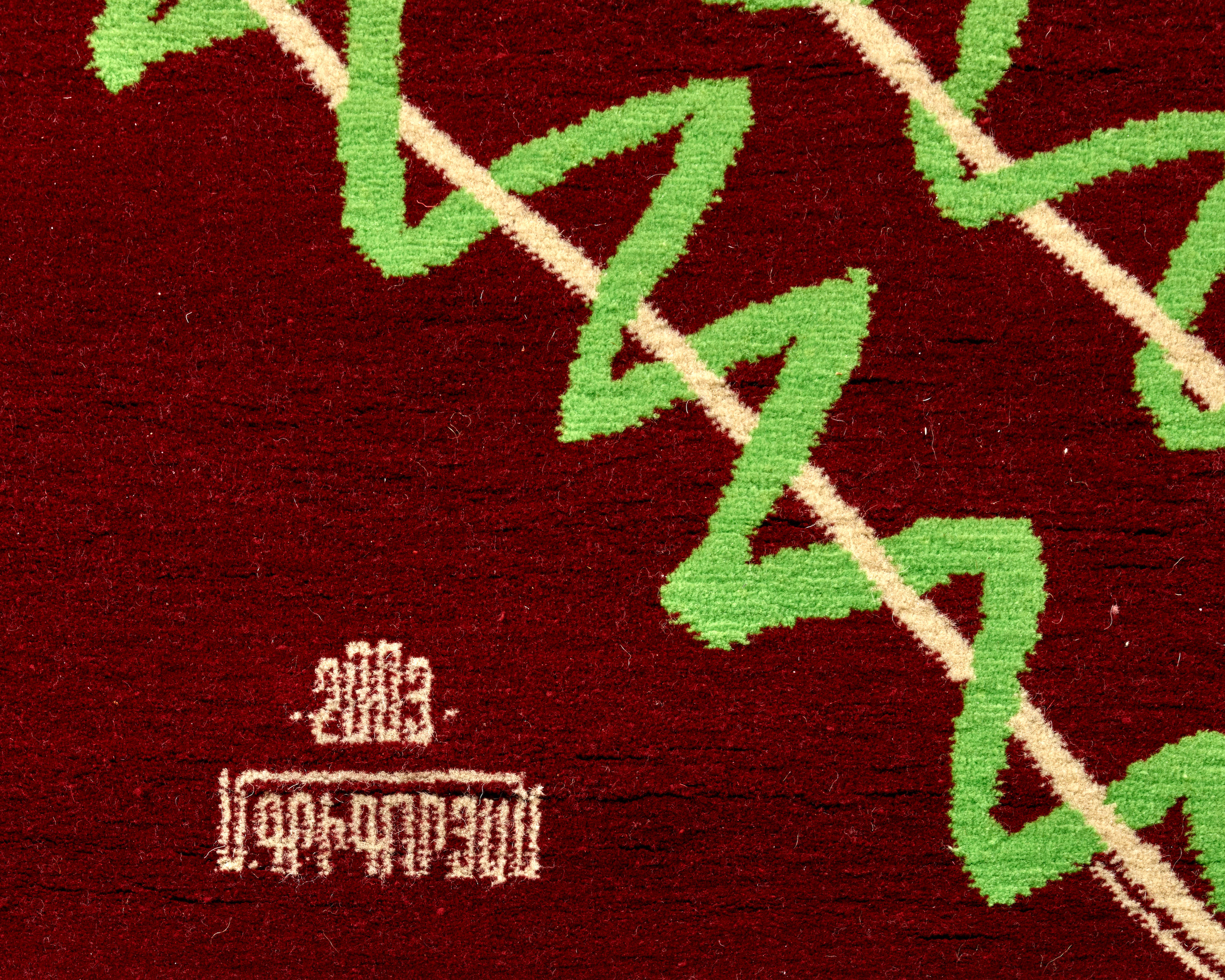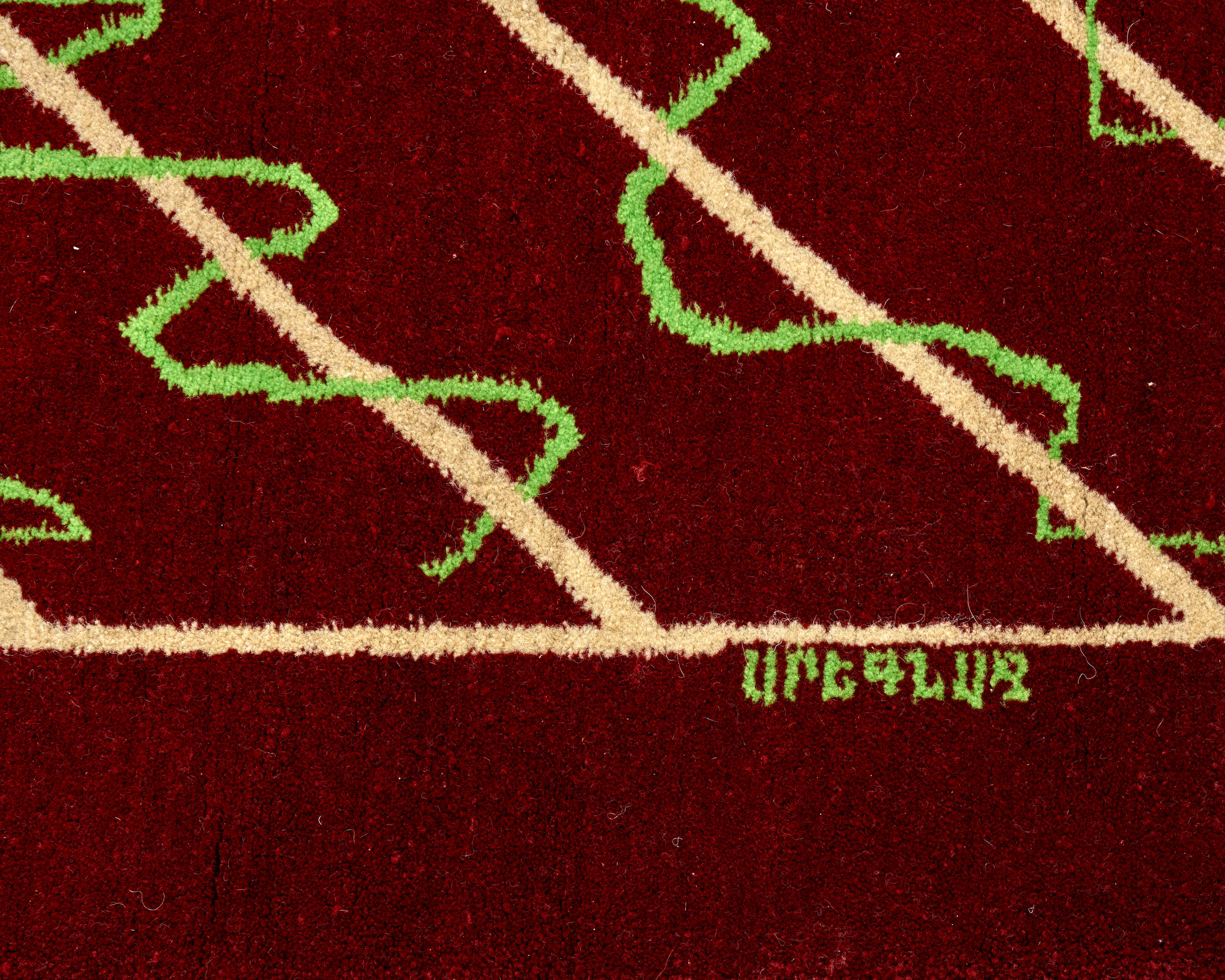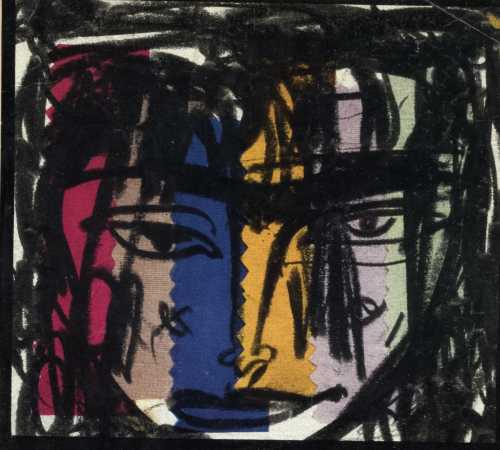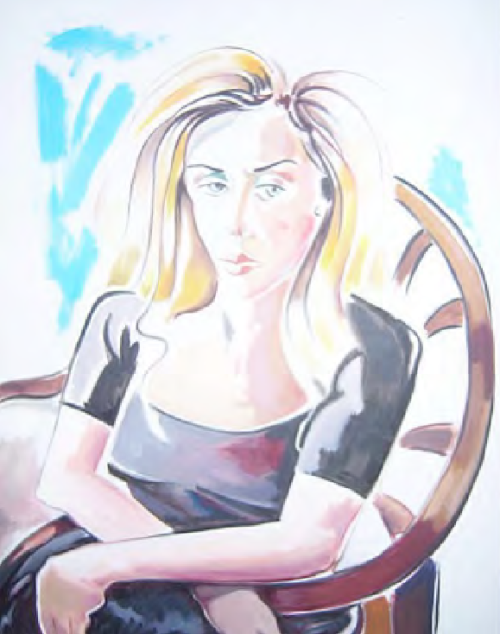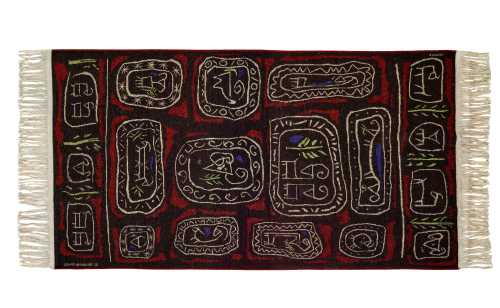- The Golden Cock 1960 - 1998
- woven carpet
- Installation
- 125 * 229 cm
- Designed in 1960 and woven in 1998
10 June 2022
Estimation
$3,000
-
$5,000
Realized Price
$5,738
43.438%
Artwork Description
"For centuries, Armenian carpets and their patterns have been misrepresented by merchants throughout the world. The interpreters of the rug weaving craft generally call it Anatolian, Turkish or Caucasian, sometimes mistaking it also for Persian.
The Armenian and Araratian plateau, as history recalls, was the most important crossroad between Greece, Rome and especially Byzantium on the side and the Far and Near East on the other. Armenia was conquered among others by the Mongols, the Khalifates and eventually by the ottoman empire and in the 17th and 18th centuries, by the Persians and the Russians. Each conqueror in particular the Ottoman Turks, patronized Armenian products and sold them to the world market ass their own production, making Armenia and the Armenians an oppressed minority with no national voice or identity.
History owes a debt of gratitude to a few honest world travellers such as Marco Polo, H.F.B. Lynch and others who, crossing the boarders of Armenia, left memorable notes and distinguished Christian Armenia from the other inhabitants, of that part of the world. It is not an easy task when a nation like Armenia, torn to pieces, tries to reconstruct its past and put itself back into the frame of the world picture.
In recent years, a nobleman, Prof. Volkmar Gantzhorn, published an exhaustive study under the title of "The Christian Oriental carpet". The book documents in detail the origins of every motif in rug weaving and confirms their derivation to be from Armenian art. The book also describes meticulously every detail of the past destruction and reconstruction the reality of the Armenian heritage in the field of Arts and Crafts.
In 1975, with the birth of my child, I began to draw with colour pens a happy goat, to amuse my little girl. She asked me to draw another and then one after another... Soon there was a long line of goats pictured for her. Consequently, I began to draw a series of goat compositions relating to ancient Urartian stone carvings and the ceramic potteries of ancient Susa, without trying to duplicate the pages of history. This experience taught me to understand what reality was hidden behind the metaphor in art. The key to accentuate form was given to me and I hold it tightly until this very day.
In 1958, a loom was installed in my studio and with the help of master weavers in Tehran, Iran, I learned the secrets of the ancient technique in rug weaving. As an artist I had only time to become a part-time weaver. My true vocation was Earth-painting, the discovery of earth, using earth instead of paint in my work.
Over more than thirty years I have woven only ten 4.5' x 8' rugs, not because I am slow, but to make a quality rug once needs a great deal of patience. Weaving is a therapeutic process; it is a healer. I thank God I had over 40 years of it. Today I think I am cured.
In the summer of 1992, I established a workshop in Erevan, Armenia. Presently, my patterns are being woven under my supervision in the Near East Museum in Yerevan. The show will continue throughout the world. The project is to create an exceptional mini market of the original designs in rug weaving.
It is presented as an homage to the arts of the Urartian-Armenian pre-Christian era."
- Marcos Grigorian
The Armenian and Araratian plateau, as history recalls, was the most important crossroad between Greece, Rome and especially Byzantium on the side and the Far and Near East on the other. Armenia was conquered among others by the Mongols, the Khalifates and eventually by the ottoman empire and in the 17th and 18th centuries, by the Persians and the Russians. Each conqueror in particular the Ottoman Turks, patronized Armenian products and sold them to the world market ass their own production, making Armenia and the Armenians an oppressed minority with no national voice or identity.
History owes a debt of gratitude to a few honest world travellers such as Marco Polo, H.F.B. Lynch and others who, crossing the boarders of Armenia, left memorable notes and distinguished Christian Armenia from the other inhabitants, of that part of the world. It is not an easy task when a nation like Armenia, torn to pieces, tries to reconstruct its past and put itself back into the frame of the world picture.
In recent years, a nobleman, Prof. Volkmar Gantzhorn, published an exhaustive study under the title of "The Christian Oriental carpet". The book documents in detail the origins of every motif in rug weaving and confirms their derivation to be from Armenian art. The book also describes meticulously every detail of the past destruction and reconstruction the reality of the Armenian heritage in the field of Arts and Crafts.
In 1975, with the birth of my child, I began to draw with colour pens a happy goat, to amuse my little girl. She asked me to draw another and then one after another... Soon there was a long line of goats pictured for her. Consequently, I began to draw a series of goat compositions relating to ancient Urartian stone carvings and the ceramic potteries of ancient Susa, without trying to duplicate the pages of history. This experience taught me to understand what reality was hidden behind the metaphor in art. The key to accentuate form was given to me and I hold it tightly until this very day.
In 1958, a loom was installed in my studio and with the help of master weavers in Tehran, Iran, I learned the secrets of the ancient technique in rug weaving. As an artist I had only time to become a part-time weaver. My true vocation was Earth-painting, the discovery of earth, using earth instead of paint in my work.
Over more than thirty years I have woven only ten 4.5' x 8' rugs, not because I am slow, but to make a quality rug once needs a great deal of patience. Weaving is a therapeutic process; it is a healer. I thank God I had over 40 years of it. Today I think I am cured.
In the summer of 1992, I established a workshop in Erevan, Armenia. Presently, my patterns are being woven under my supervision in the Near East Museum in Yerevan. The show will continue throughout the world. The project is to create an exceptional mini market of the original designs in rug weaving.
It is presented as an homage to the arts of the Urartian-Armenian pre-Christian era."
- Marcos Grigorian
More lots by Marcos Grigorian
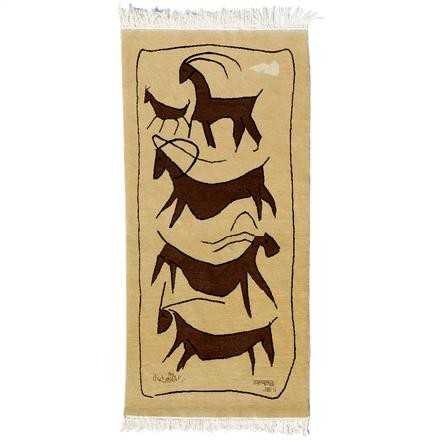
art rug
Realized Price
33,641 USD
Min Estimate
18,783 USD
Max Estimate
26,597 USD
Average Artwork Worth
+40.788%
Average Growth of Artwork Worth
Sales Performance Against Estimates
Average & Median Sold Lot Value
2021 - 2025
Performance vs. Estimate
2021 - 2025
Sell-through Rate
2021 - 2025

